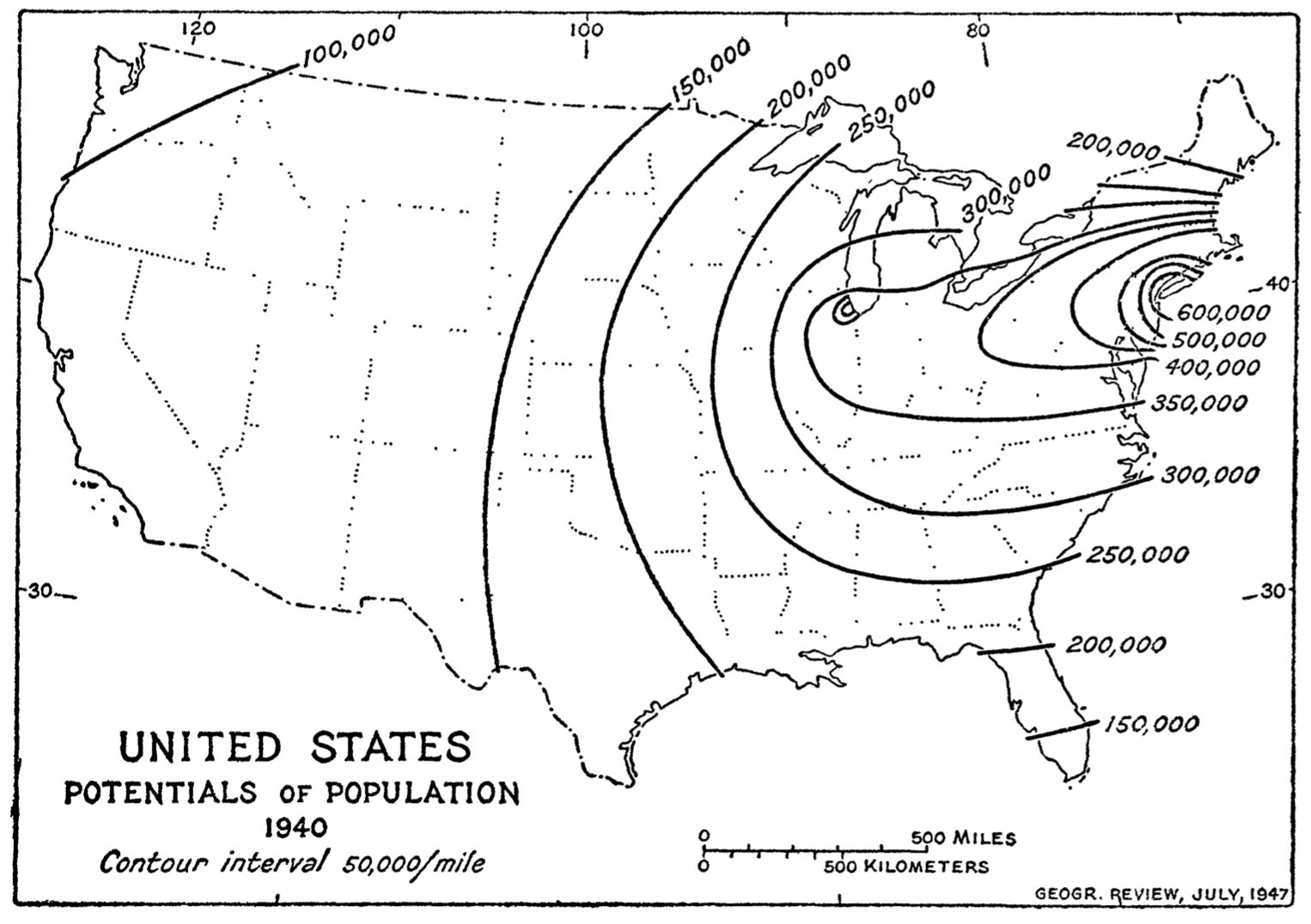1942 - The Unity of Nature
theme: social_physics
theme: social_physics
1926 - A Revision of Young's Manual Of Astronomy
same_person
same_person
1926 - A Revision of Young's Manual Of Astronomy
translation
translation
2014 - Social Physics
theme: social_physics
theme: social_physics
1959 - Geography of Price
theme: social_physics
theme: social_physics
Demographic Gravitation
1948

United States: potentials of population, 1940.
(Stewart, 1948)Initially interested in matters extraterrestrial by mid-career [John Q. Stewart's] research focus became increasingly earthly. […] Part of that same terrestrial turn was his interest in models of population potential; that is, applying ideas of gravitational potential to the geographical distribution of population.
(Barnes & Wilson, 2014)Stewart found that expected and actual numbers of alumni ‘more or less’ lined up. It showed him that potential models applied not only to objects in the heavens but also to those down on earth within the social field, thus fulfilling the promise of monism; that is, a social physics one-size-fits-all theory.
(Barnes & Wilson, 2014)
1942 - The Unity of Nature
theme: social_physics
theme: social_physics
1926 - A Revision of Young's Manual Of Astronomy
same_person
same_person
1926 - A Revision of Young's Manual Of Astronomy
translation
translation
2014 - Social Physics
theme: social_physics
theme: social_physics
1959 - Geography of Price
theme: social_physics
theme: social_physics